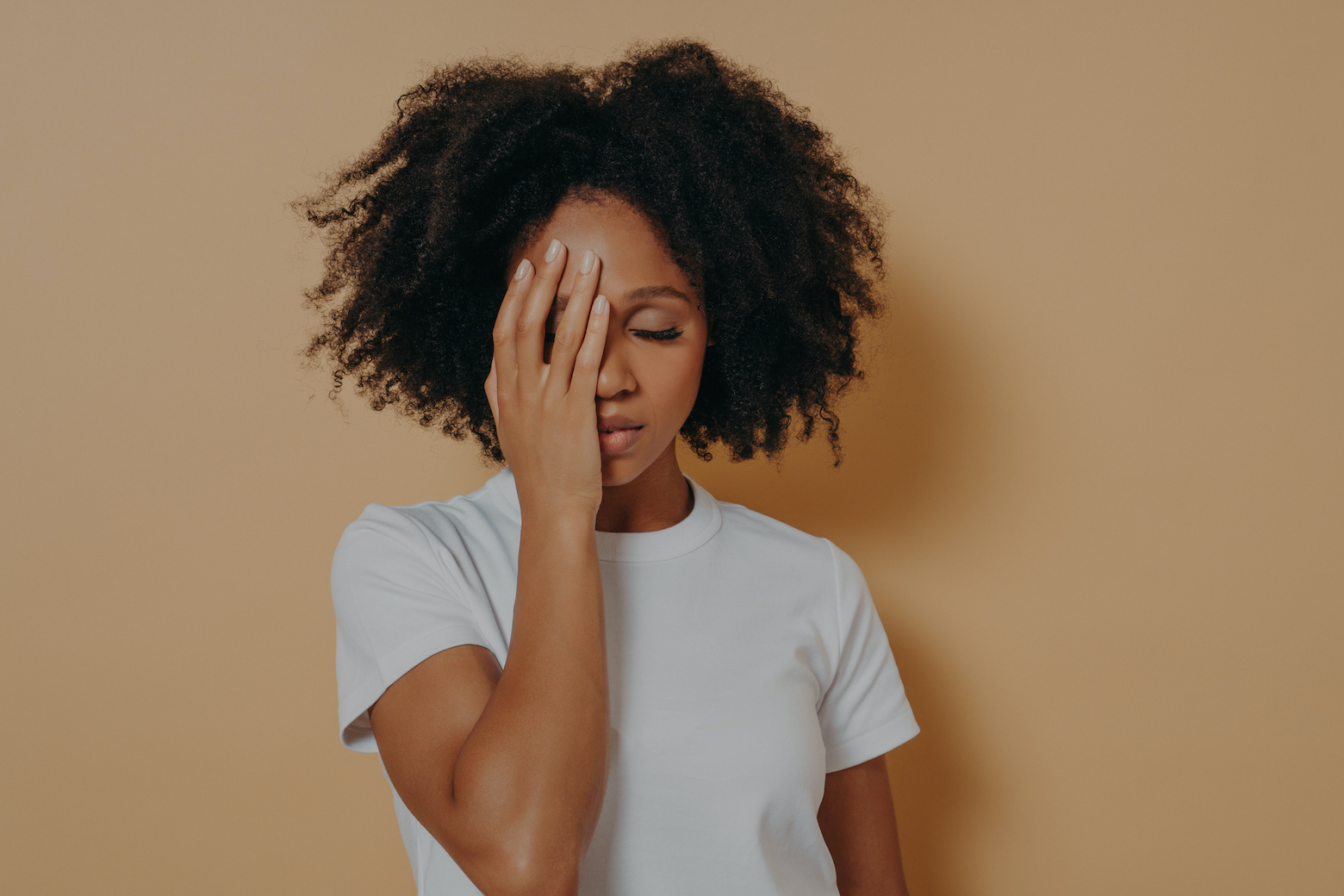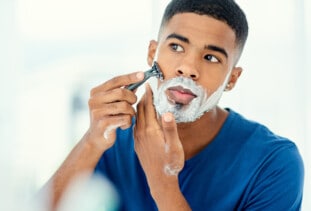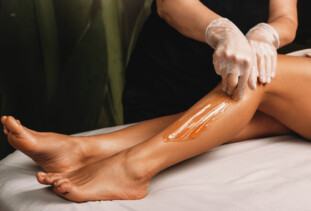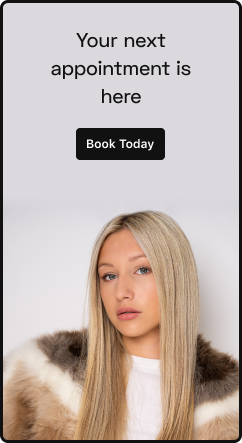The news cycle, trouble at work, and even the pressures of everyday life — it can be quite a lot to handle. We recently surveyed over 1,200 Americans about their stress levels and found that 6 in 10 Americans are more stressed than they were last year. Concerns about work, finances, and health are stressing more and more people out — and now they’re looking for solutions.
We discovered the average American has recently spent $260 on stress treatments, from new products to professional services. To learn more about how people are experiencing and managing stress, we asked about everything from skin to stomach troubles and sleep to vitamin supplements. Read on to find out what stress symptoms Americans are dealing with and how they’re handling them.
Key findings
- A third of Americans report skin problems due to stress.
- Breakouts are the number-one stress-related skin problem.
- Most Americans (85 percent) simplify their beauty routines when they’re stressed.
- Easy maintenance is the number-one hairstyling priority.
Stress symptoms affect the whole body
A jam-packed schedule and difficult life events can have major effects on how your body feels, even if other people can’t tell. Of those surveyed, 80 percent of Americans told us they experience changes in energy levels due to stress, and 49 percent reported trouble with digestion.
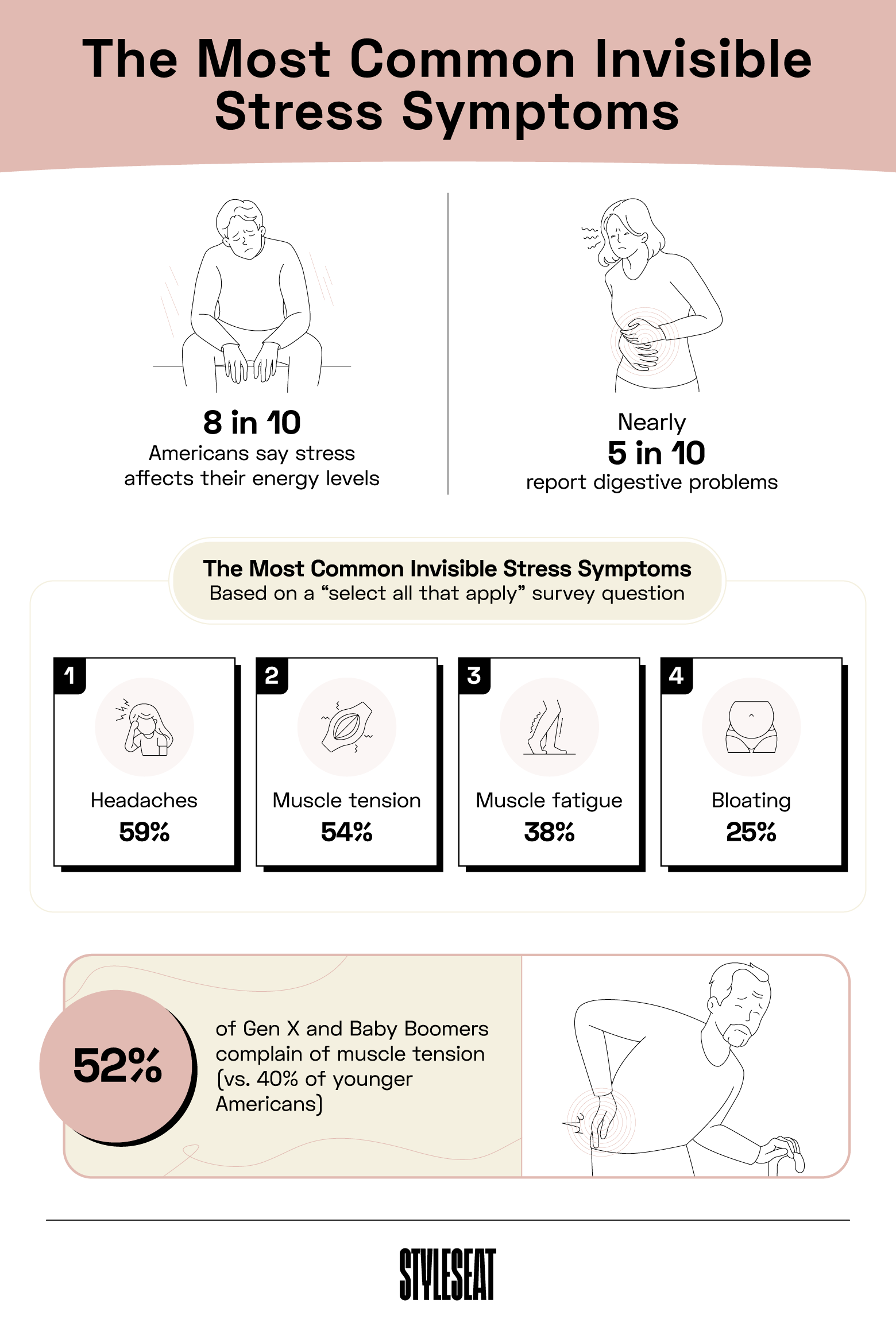
We asked Americans to tell us which specific invisible stress symptoms they experience — ones that people around don’t normally notice — and found the most prevalent symptoms are headaches (59 percent), muscle tension (54 percent), muscle fatigue (38 percent) and bloating (25 percent).
Muscle aches and pains tend to affect older Americans more than younger ones. When it comes to older Americans, 52 percent of Baby Boomers and Gen Xers say muscle tension is their worst symptom compared to 40 percent of their younger counterparts.
Stress has a major impact on hair and skin health
When it comes to visible stress side effects — ones that are more obvious to those around you — Americans reported that skin problems were the most common symptoms. Nearly a third (32 percent) of Americans report skin issues due to stress. In addition, 16 percent report hair problems.
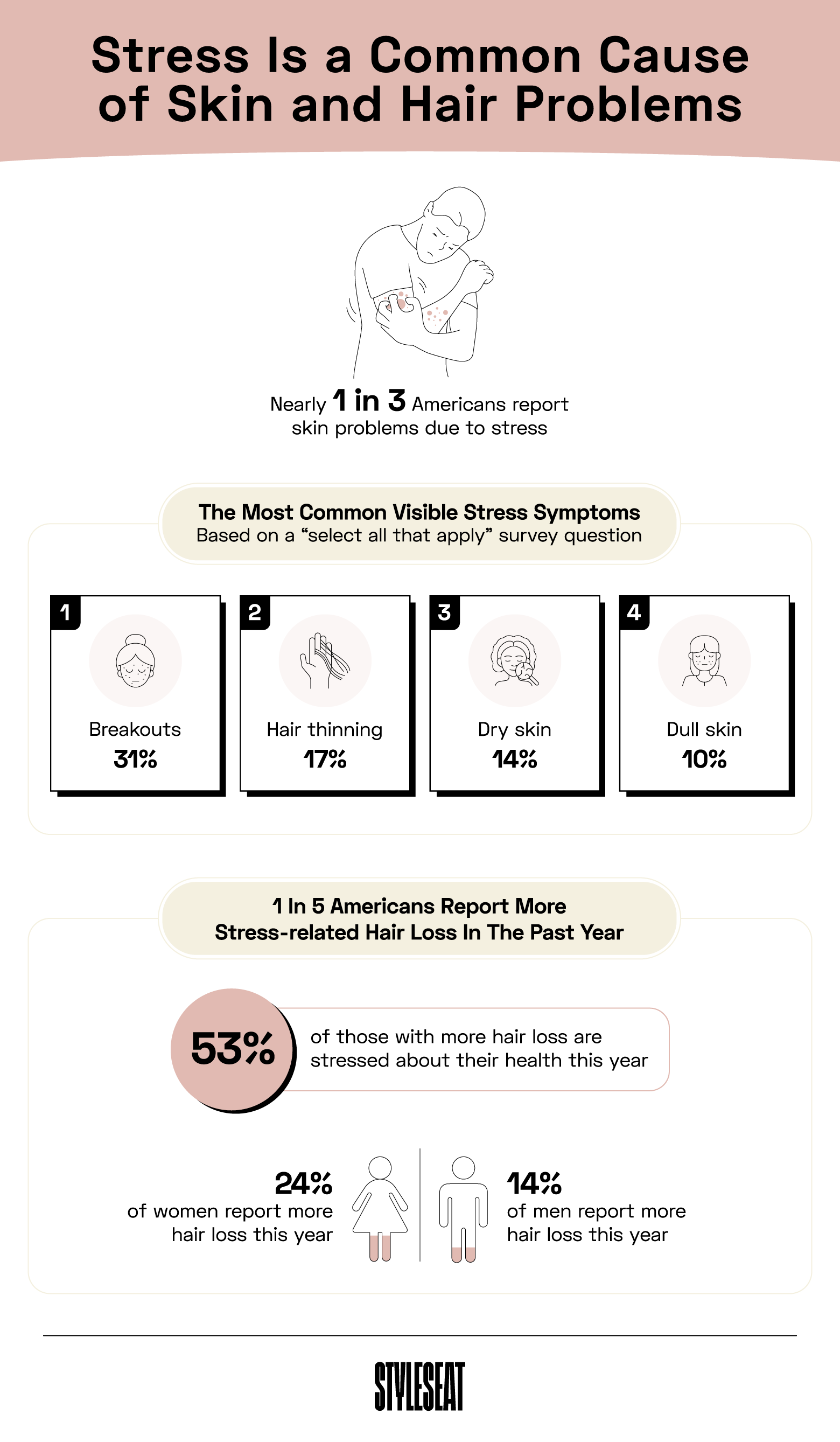
The most common, specific visible symptoms of stress are breakouts (31 percent), hair thinning (17 percent), dry skin (14 percent), and dull skin (10 percent). Women are especially prone to breakouts when they’re stressed — 42 percent of women report stress-related breakouts, versus 20 percent of men.
Thanks to increased levels of stress, Americans’ skin woes are getting worse. About a third (32 percent) of Americans report more breakouts this past year. Women are especially prone to increased breakouts, with 40 percent saying they’ve had more in the past year.
It turns out that hair loss is actually on the rise, too: 1 in 5 Americans report more stress-related hair loss this year, and 1 in 5 Americans report more stress-related hair loss in the past year. Just as they’re struggling with more skin problems, women are also losing more hair than they ever have before, with 24 percent of women reporting increased hair loss this year compared to 14 percent of men. Those losing more hair are particularly stressed about their health.
The visible stress side effects that bother Americans the most
We know that stress can manifest in a variety of ways, but which ones bother Americans the most?\
Breakouts, bloating, and hair thinning are the top three complaints. More women (30 percent) than men (18 percent) say breakouts are their worst stress side effects, and more complain about hair thinning, too. Of women, 22 percent say their most bothersome stress symptom is hair thinning versus 12 percent of men.
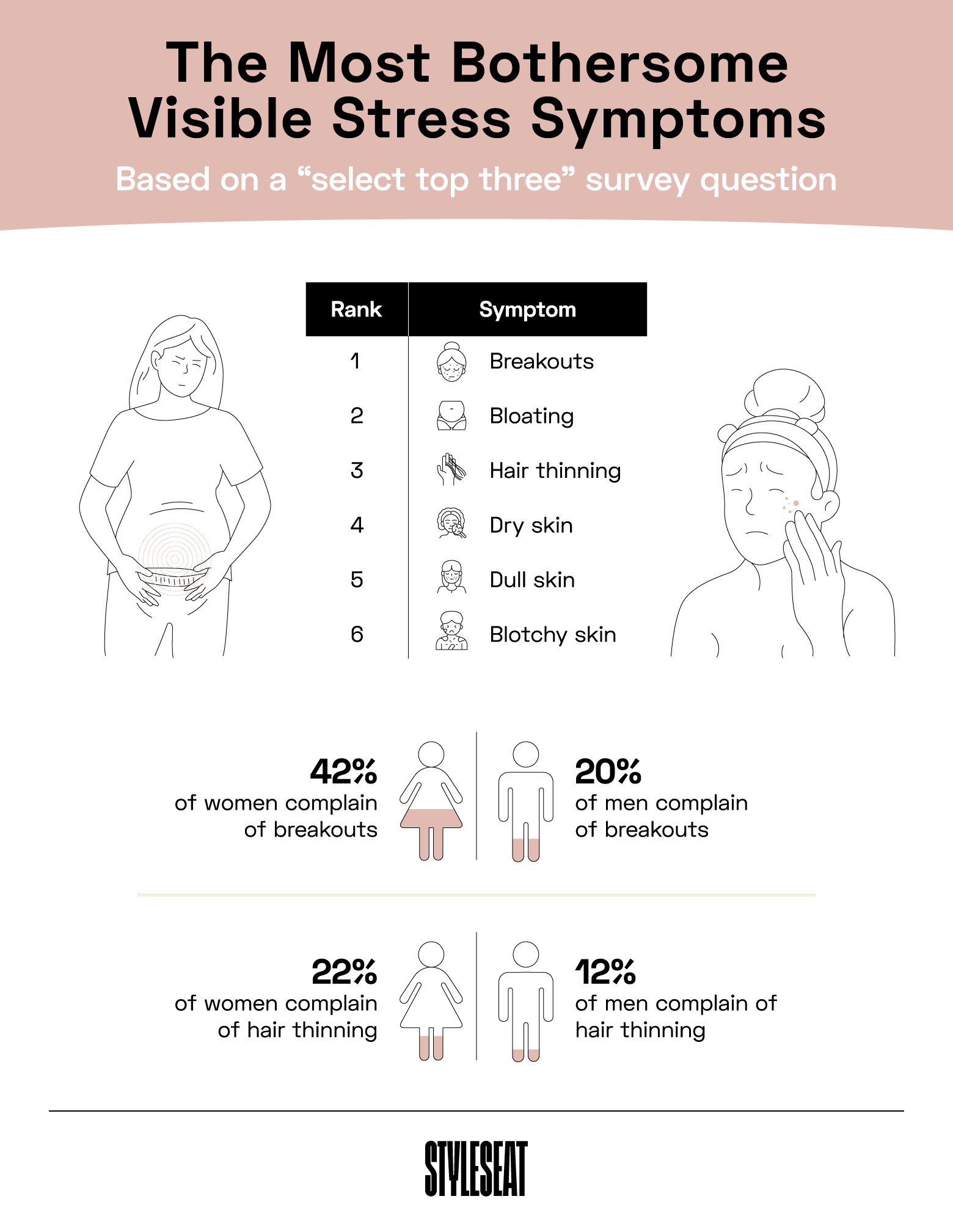
Many Americans try to manage stress at its source
Whether the symptoms of stress are visible or invisible, many of the solutions work from the inside out. We learned a majority of Americans manage stress through basic lifestyle shifts like more sleep (69 percent), exercise (60 percent), and hydration (53 percent).
Of course, stress management differs from person to person — you have to find what method works for you. Men tend to exercise more (64 percent) than women (55 percent), while women are more likely to change their diets (32 percent vs. 26 percent), drink more water (57 percent vs. 49 percent), and even take targeted vitamins and supplements (40 percent vs. 33 percent).
Some Americans (14 percent) have also tried professional bodywork to relieve their stress. Among those, massage (86 percent), sauna (22 percent), and steaming (14 percent) are the most popular choices, and 89 percent said these kinds of treatments were effective.
Americans simplify beauty routines when stressed
You’ve probably heard the old advice that “less is more” when it comes to caring for upset skin. Most Americans (85 percent) simplify their beauty routines when they’re stressed, opting for fewer or milder products.
The most popular at-home skin treatments for stress are more, or heavier, moisturizer (35 percent), gentle exfoliation (28 percent), and skin-boosting supplements (25 percent).
Depending on where you live, you may have specialized beauty services available nearby. Of those who have sought professional help to soothe stressed skin, 72 percent have had facials, 22 percent have had scrubs, and 20 percent have even had laser treatments. Most of those who have sought professional help (86 percent) say these treatments are effective.
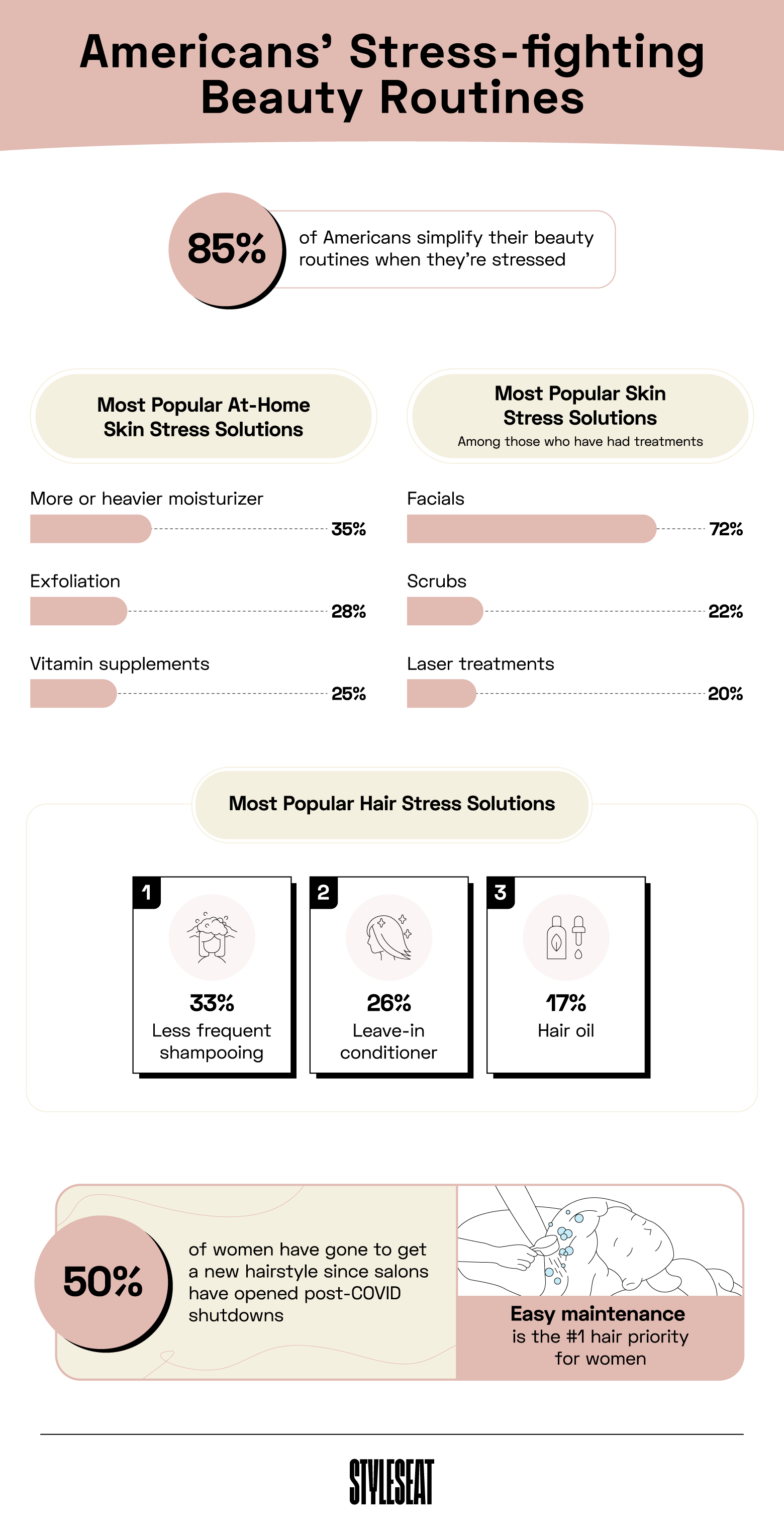
Stressed hair needs TLC, too. Sometimes, fewer washes can help restore some balance on your scalp. A third of Americans shampoo their hair less often when they’re dealing with stress symptoms. Just like hydration helps your body and skin, more moisture can also help hair, too. Just over a quarter (26 percent) of Americans use leave-in conditioner to combat hair stress, and 17 percent use hair oil.
How you cut and style your hair can have a major impact on its overall health and appearance. Of the women we surveyed, 50 percent have gone to get a new hairstyle since salons have reopened after COVID-19 shutdowns. The main reason for new styles these days is easy maintenance (47 percent). When we asked which was more important — ease or trendiness — 95 percent of Americans chose easy maintenance.
Whether you want some help troubleshooting your skin or a new lowkey hairstyle, StyleSeat can make life a little easier and help you find the right beauty professional in your area.
Methodology: We surveyed 1,208 Americans on August 16th, 2022. 49 percent identified as men, 50 percent as women, and 1 percent as nonbinary.
